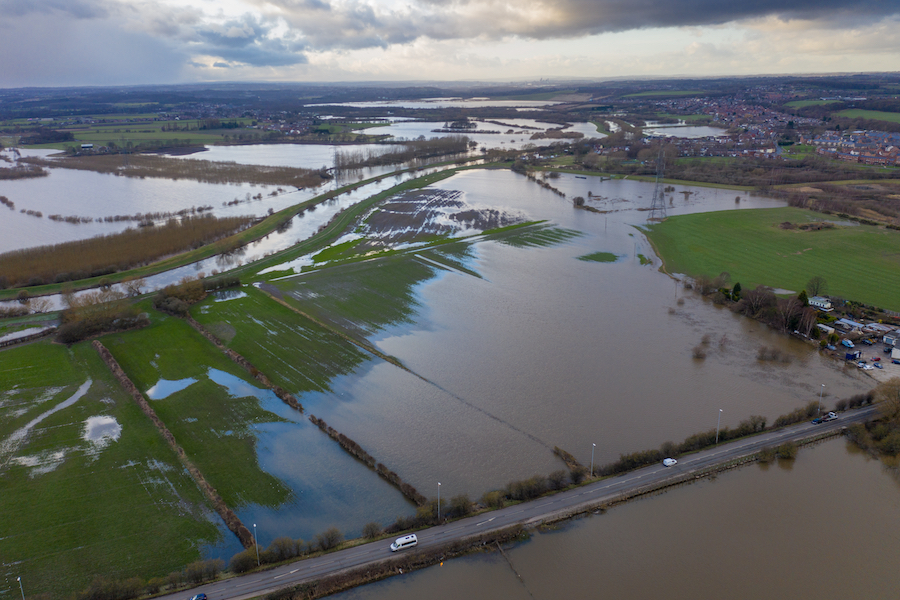- We recently discussed how soil management is crucial in Sustainable Intensive Agriculture.
- We now consider how an individual farmer can optimize soil productivity.
- Providing a suitable soil structure, managing the surrounding landscape, and improving natural fertility are extremely important.
Soil Structure and Management
A ploughed field can absorb more moisture than a low/min till regime and can also be helpful in improving soil structure.
In SIA, as we’ve pointed out many times, such cultivations and soil inversions are not desirable from an environmental standpoint.
There are many other solutions worth considering before this method of last resort.
Soils that have a poor structure and profile can cause a host of problems, and we’ll examine the main three here.
Excessive Runoff, Erosion and Slaking
A farmer needs to know what type of soil is present, as remedial action is often dictated by this. This can easily be determined by digging several holes and examining the topsoil and the subsoil using a range of reference pictures and diagrams. More shallow texture sampling can also be done with a soil testing probe/borer (below).

The most common classification is by texture.

As a rule of thumb, clayier soils are more vulnerable to waterlogging, whilst sandier soils are more vulnerable to wind erosion.
Soils with coarse blocks or plates are also prone to waterlogging as they reduce the passageways for water to percolate.
Peat soils have their own peculiar characteristics. If fine textured, they can also be damaged by wind erosion and poorly managed peat soils can shrink.
It’s useful to:
- Examine pores and fissures for good aeration and drainage to establish that a soil is “freely drained”
- Look for structural units
- Assess soil density
- Assess the packing density of the subsoil
- Examine plant root growth
- Examine soil colour
- Measure the numbers and varieties of insects (especially earthworms)
Runoff occurs when either the groundwater level is high, or the soil has reached the point where it’s unable to retain any more moisture as further percolation is no longer possible.
Damage can occur to both the crop as the water moves downhill, but also damage other areas away from the farm, including property. It can even cause watercourses and rivers to clog from the sediment carried away, causing flooding downstream.
Even if the water remains in the field, crop damage is likely from standing water (ponding).

It’s often necessary to manage the runoff by channelling the water, which can be achieved by planting grass or other crops on field headlands, for example. These act as a soakaway and can establish drainage channels in the field to divert water to less harmful areas, including retention/detention ponds. Do note, however, that this is not the same as wholesale ploughing.
For some crops, raised beds are also a possibility.
Sandier soils and some fine peats are likely to be free drained, but the risk is wind erosion here. From an SIA standpoint, the best methods of control are probably zero/min till, to plant cover crops and establish crops before the rainy season(s).
Planting trees and hedges to act as a windbreak helps and will also improve biodiversity.
Where possible, transplanted crops are much more beneficial than crops from seeds. The best solution, though, is to increase the organic content of the soil through slurries and manures.
Slaking can occur on sandier soils, including those with low to moderate silt levels. The fine soil can fill the soil pores to create a cap. On clayier soils, slaking can still occur from ponding and a subsequent cap forming. In some cases, light cultivations may be necessary to break up the soil cap.
Damage to Yield from Compaction
For advocates of SIA, this is a complex issue. Compacted soils decrease oxygen levels and increase the absorption of carbon dioxide through sequestration into the sink. However, compacted soils eventually become unusable or at least cause large yield losses. Matters have been deteriorated by the ever-increasing use of heavy machinery and reducing the use of these, or at least improving timing to avoid wet periods, are effective methods of reducing soil compaction.
One of the best methods of dealing with compaction that’s occurred at depth in the soil involves using subsoiling machinery, typically working at a depth of 35cm. Although this is going to release far fewer greenhouse gases than ploughing, a great deal of research is required in this area.
The issue is whether breaking up compacted subsoil damages its ability to act as a carbon sink. In some cases, it may allow better absorption of methane but release moderately higher levels of carbon dioxide.
Some scientists argue that unaddressed compaction will eventually increase greenhouse gas emissions as a result of slower water percolation, likely making runoff worse.
Another possibility is to only subsoil tramlines and headlands to reduce runoff.

We think limited subsoiling is a useful tool in SIA. Where necessary, every three years or so is sufficient without any yield loss. However, it needs to be used sparingly as the benefits of deeper rooting structure and drainage are offset by the temporary uptick in fertility followed by a decline as we destroy the underground habitat of beneficial worms, insects, and microorganisms. It’s also expensive.
Water Pollution and Damage to River and Riparian Habitats
Soil sediment in runoff can also smother river gravel and degrade aquatic life, suffocate fish eggs, and nutrients contained in the sediment can cause excess fungal and bacterial growth. The water can also act as a medium to carry pesticides away from where they were intended (i.e., in the field).
And Finally…
Don’t forget to take care of Ph by liming for acidity and using sulphur for alkalinity.
Other Insights That May Be of Interest…
Sustainable Agriculture: Maximising Yields Whilst Dryland Farming
